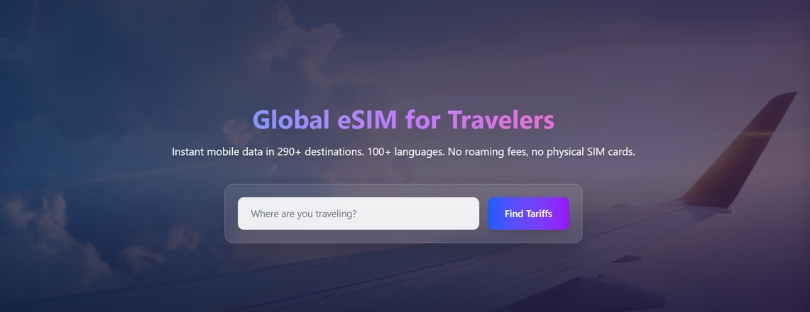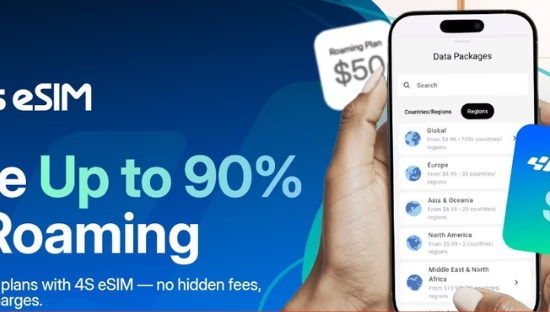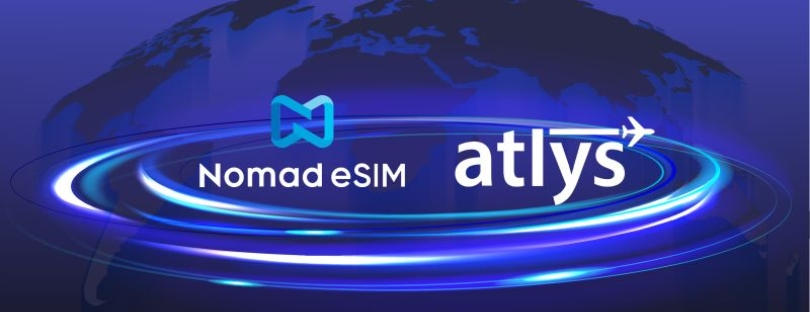
290+ Destinations? Simcardo Arrives With Big Numbers
Simcardo has announced the launch of its global eSIM platform with support for more than 290 listed destinations, over 100 interface languages, and pricing in 30+ world currencies. The Prague-based company positions itself as a simple, accessible option for travelers who want quick mobile data without dealing with physical SIM cards, roaming surprises, or language barriers.
But in today’s eSIM market, where almost every provider claims “200+ countries” or “global coverage,” destination numbers alone don’t mean much. What matters most—and what Alertify readers always ask about—is the quality behind the coverage.
This feature takes a closer look at Simcardo’s offering, where it fits in the current ecosystem, and what travelers should actually pay attention to when choosing an eSIM provider.
The 290+ destinations question
Simcardo’s announcement highlights support for “290+ destinations,” which immediately stands out because it’s far above the standard 150–200 countries most eSIM brands list. But anyone familiar with the eSIM space knows these numbers are often inflated by counting territories, islands, and regions individually.
This isn’t unique to Simcardo—many providers do the same. A “destination” could be:
- a sovereign country
- a dependent territory
- an island region
- a special administrative zone
- a region with the same mobile network
From a traveler’s perspective, the key isn’t how long the list is—it’s how well the service works when they arrive.
What actually matters in eSIM performance
Rather than focusing on destination count, serious travelers care about deeper technical and practical aspects of connectivity. The industry analysts at GSMA, Omdia, and TeleGeography emphasize these factors far more than coverage numbers.
Key quality factors travelers should look for
- Which MNOs/MVNOs the provider partners with
Are they using strong local operators (e.g., Vodafone, Orange, MTN, Telstra) or cheap wholesale roaming networks with spotty coverage? - Whether the plan uses true local profiles or pure roaming
Local profiles usually deliver better speeds, less latency, and more stable connections. - Network speeds: 5G or 4G only
Some providers advertise 5G but quietly drop users to 4G during congestion. - Whether there is throttling after a certain amount of data
Unlimited plans often throttle to 1 Mbps or lower after a threshold. - Whether global plans actually work globally
Some so-called “world plans” only cover 60–80 countries in practice. - Activation experience
QR code? App-based? Installation issues? - Customer support responsiveness
A fast reply matters more than a 290-line destination list. - Transparent pricing
Hidden FUP limits and unexplained speed drops are major traveler complaints.
These are the criteria by which eSIM brands are truly judged—and the lens Alertify uses in all provider comparisons.
What Simcardo offers in practice
Simcardo doesn’t frame itself as a disruptor but as a straightforward, easy-to-use platform. Its main strengths appear to be accessibility and a frictionless purchase process:
- Instant eSIM delivery with QR code activation
- Clear interface in 100+ languages
- Support for 30+ currencies
- Simple checkout flow
- Plans designed for quick activation
- A user-friendly website that doesn’t overwhelm newcomers
For casual travelers, this combination matters more than technical specs. People who just need data for Google Maps, WhatsApp, and a few gigabytes of browsing prefer simplicity over complexity.
The company also says it partners with regional carriers instead of relying on a single global roaming profile. If true, that could put its performance above low-tier budget players—but this will require real-world testing to confirm.
The traveler experience Simcardo is targeting
Feedback across Reddit travel communities, long-term digital nomad groups, and airline forums shows a clear trend: travelers want fewer surprises. Whether they choose Airalo, Nomad, aloSIM, Holafly, Airhub, or any other provider, expectations are increasingly consistent.
What travelers say they actually need
- Wide, stable coverage without switching eSIMs
- Fast activation after landing
- Predictable, transparent pricing
- A network that doesn’t suddenly slow to unusable speeds
- Good customer support when something goes wrong
Travelers today tend to use multiple eSIMs over time and remember how a brand performs in real life—not what was promised on the homepage.
eSIM growth continues to accelerate
eSIM adoption has grown rapidly since 2023, driven by Apple’s eSIM-only iPhones in the US and the growing number of Android devices supporting dual eSIM functionality. Analysts expect the global eSIM market to reach hundreds of millions of active travel users by 2030, with airlines, airports, and online travel agencies integrating eSIMs directly into their customer flows.
This shift means that the competitive advantage for providers will come not from the number of destinations listed, but from:
- smoother user experiences
- better regional plans
- stronger partnerships with local carriers
- and more transparent pricing models
Simcardo’s multilingual approach makes sense in this environment—travelers increasingly expect eSIMs to “just work” without guesswork.
With broad global coverage and multilingual support, we aim to make international data access straightforward for all travelers.”
Conclusion: Where Simcardo fits in today’s crowded eSIM market
Simcardo enters an eSIM market that is very competitive and increasingly sophisticated. While “290+ destinations” may look impressive at first glance, experienced users know this metric is not what defines eSIM quality anymore. What matters is reliability—which networks they use, how the speeds hold up, and whether pricing is clear.
Compared with established players like Airalo, Nomad, aloSIM, Ubigi, Airhub, Yesim, and regional specialists, Simcardo’s strengths appear to be accessibility, language support, and a straightforward activation experience. If the company’s network partnerships and speed performance prove solid in real-world testing, it could become a strong option for travelers who prioritize convenience and simplicity.
As always, Alertify will keep tracking how the platform performs, which carriers it partners with, and how travelers rate the service as more users try it on the road.












